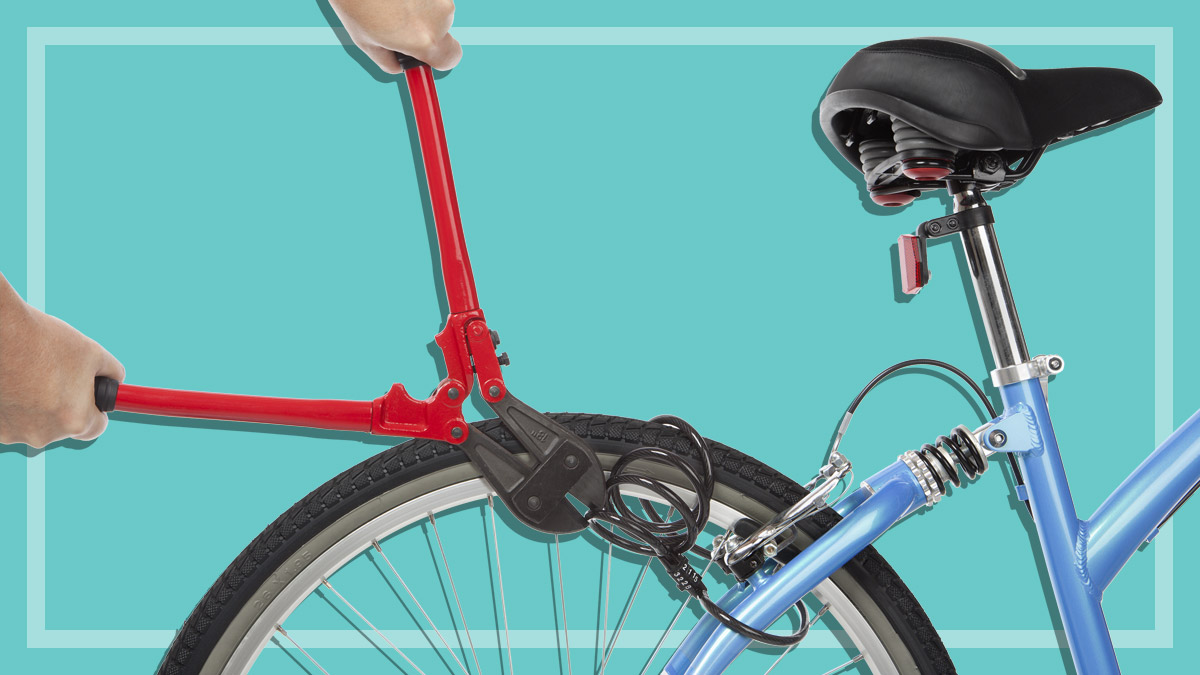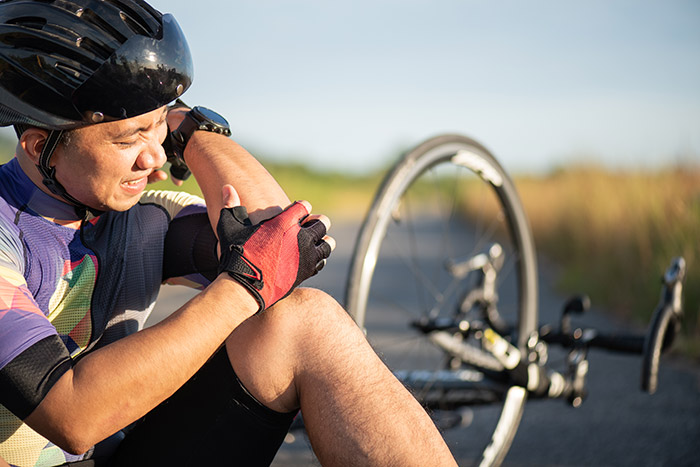Get our independent lab tests, expert reviews and honest advice.
How to buy the best bicycle insurance

Thousands of bicycles are stolen across the country every year. Sadly, they’re relatively easy to steal and difficult to get back.
On this page:
- Do I need bicycle insurance?
- What does bike insurance cover?
- I have a cheap bike – is insurance worth it?
- Bicycle cover with your home insurance
Bikes can also be dangerous, with around 12,000 cyclists hospitalised each year in crashes. If you’re injured while riding, it could be a costly exercise – particularly if you have to take time off work as a result.
This is where you might think bike insurance could come in handy, but with a long list of exclusions, and the chance you’re already covered for some events under current insurance, it’s best to do your homework to make sure it’s worth it.
Please note: CHOICE does not currently review standalone bicycle insurance policies.
Do I need bicycle insurance?
Legally you don’t need insurance to ride a bicycle. But if you’re considering taking out a policy, the first thing you should consider is that you might already be covered by other types of insurance.
For example, Medicare, private health insurance, life insurance and home and contents insurance can protect you for various scenarios, from personal injury to theft at home.
To avoid over-insuring yourself, decide on what you want cover for and don’t pay for what you don’t need.
Does bike insurance cover ebikes?
All the standalone bicycle insurance policies we looked at covered ebikes, with most policies specifying that the bike must be a ‘pedal assist’ bicycle which does not exceed 300 watts.
Bicycles fitted with an internal combustion engine or other sources of power assistance are generally not covered (these may be considered mopeds and will require different cover).

Questions to ask when considering bike insurance
1. What do you want cover for?
You
- For injuries incurred when using the bike?
- For loss of income if unable to work?
The bike for damage and theft
- When the bike is at home?
- When the bike is in use?
- When travelling or competing?
Third-party liability
- For injuries to third parties?
- For damage to property?
2. How much are you covered for under the policy?
- For the bike?
- For accessories?
- For personal injury and income loss?
- For third-party liabilities?
3. What are the exclusions?
4. What is the excess on claims?
What does bike insurance cover?
Different forms of bicycle insurance may provide cover for some, or all, of the following:
1. Cover against theft or damage
According to Victorian crime statistics, bike thefts increased by over 10% from 2018 to 2019, hitting a new record of 6923 bikes stolen in one year in Victoria. If you want your two wheels covered in case of theft, you’ll still need to be diligent in looking after your bike.
Many of the bike insurance policies we looked at had common exclusions for which theft wouldn’t be covered. Generally, any accessories such as tyres and wheels won’t be covered unless the bike is stolen or damaged in the same incident.
Theft also often won’t be covered if:
- your bike was stolen from home but there isn’t visible evidence of forced entry to your home/removal of your bike, or you were away from home for more than 60 days
- you didn’t use an approved lock to secure your bike frame to an immovable object (whether you’re out and about or at home). At home you can usually secure it in a garage, provided all the windows and doors are securely locked.
Bicycle insurers may choose their own “approved locks”, so you’ll need to make sure your lock is covered under their product disclosure statement (PDS).
The best locks are generally D-locks, according to Bicycle Network. Only one lock scored a perfect 10 for security in their 2016 test (published in RideOn), which involved taking a hammer, bolt cutters, and then an angle grinder to them.
Tips to protect bikes against theft
- Lock your bike to a fixed or immovable object using a high-quality lock (D-locks are usually best).
- Leave as little space as possible in the D-lock – the tighter it’s done up, the trickier it is for thieves to attack it with tools.
- Ensure the keyway of the lock faces downwards.
- Lock your bike in a well-lit, visible and high-trafficked area and avoid leaving it overnight.
- Lock up your bike in different places so thieves don’t notice a pattern.
- Secure or remove easily detachable items such as quick release wheels and lights.
- Have your bike engraved with your state ID number (e.g. driver’s licence number). Some police stations offer free bike engraving. You can also register your bike on the National Bike Register by buying a DataDot kit and marking your bike.
- Photograph your bike, document its serial number (if it has one), make, model, size and colour.
2. Cover for personal injuries and loss of income
Personal injury cover is often included in the array of bicycle insurance products on offer, and some businesses even offer it as a stand-alone insurance product. However, it pays to know just what’s on offer here so that you’re not over-insuring yourself.
In Australia, if you have to go to hospital, you can be treated at no charge through Medicare. However, Medicare won’t cover your ambulance costs, and usually won’t cover any dental treatment or physiotherapy if this is required as a result of your injuries. If you have private health insurance, depending on your cover, some of those costs not covered by Medicare may be met by your provider.
Many bicycle insurance policies won’t cover costs that can be claimed wholly or partly through Medicare, or any costs that could be claimed through your private health insurance, if you have it.
In Australia, if you have to go to hospital, you can be treated at no charge through Medicare
Perhaps a more useful aspect of coverage provided by some bike insurers is loss-of-income cover. Again, be aware that a bicycle insurer may only pay any costs associated with loss of income that are beyond what you’re entitled to receive through other insurance policies such as compulsory third party linked with vehicles, any statutory benefits, or income protection cover which often comes as an option with life insurance policies through your superannuation.
In addition, if you mostly use your bike to commute, some states and territories (such as Queensland and the ACT) provide cover for your journey to and from work through workers’ compensation schemes. In states where workers’ compensation doesn’t provide this cover (such as WA, Tasmania and South Australia) it will often be included in your union membership.
3. Cover for third-party liability
Collisions between cyclists and pedestrians certainly can and do happen, but research suggests they’re not common.
One study by the Monash University Accident Research Centre found that in 2015–16, 12 people presented to Emergency Departments and 38 people were admitted to hospital in Victoria for pedestrian injuries as a result of being struck by a bicycle.
These numbers represent a very small proportion of pedestrian injuries, with the overwhelming majority being caused by collisions with a motor vehicle.
That said, the risk still exists, so if cover for third party property and personal injury (much like the green slip for a car) is all you’re interested in, Cycling Australia and Velosure provide standalone third party liability cover.

I have a cheap bike – is insurance worth it?
Choosing the level of risk you want to take on is a personal decision. Given that only 10% of stolen bikes may ever be recovered, if you have an expensive bike, you may decide that insuring it is worth it.
The best way to calculate whether getting insurance for your bike is worthwhile is to work out how much you would end up paying in insurance over the lifespan of your bike (say, seven to 10 years) compared to the cost of your new bike.
For example, if your new bike cost $700 and your insurance will cost $150 per year, you’re likely to end up paying more in insurance than it would cost to replace your bike. In this case, you might be better off ‘self insuring’ by putting money into a special savings account so you can afford to replace your bike if it is damaged or stolen.
Consider how much you’d end up paying in insurance over the lifespan of your bike (say, seven to 10 years) compared to the cost of your new bike
However, it’s worth finding out how much it would cost to add your bike to your home insurance as portable contents, as this can be significantly cheaper than standalone insurance.
It’s also important to remember that if you decide not to get insurance, you won’t be covered for legal liability. And while portable contents policies will cover you for legal liability away from home, you need to read your policy document to make sure there aren’t any exclusions that apply while you’re riding your bike.
Standalone bicycle insurance providers
Some providers offering standalone policies include:
- Velosure
- Sundays Insurance
- Bikesure
- Wiggle
- Real Insurance
Bicycle cover with your home insurance
Your home contents policy will usually cover your bicycle while it’s at home, but it may leave a gap in cover when you’re out and about.
Many insurers offer portable cover for specific items away from home as an optional extra, which can be a cost-effective option.
Some may even provide cover for any third party legal responsibilities in their optional supplementary bicycle cover, although the cover may not apply when you are taking part in a competitive race.
Alternative insurance providers
Membership of a bike association such as Bicycle Network, Cycling Australia, or your state’s local cycling group usually includes rider insurance, which offers cover for costs associated with personal injuries, third-party legal liability and in some cases, income protection. Cycling Australia also offers members a 10% discount on stand-alone Velosure bike insurance.
Income protection cover (in case you’re injured and unable to earn an income) is often offered through your superannuation fund or on life insurance policies. Some bike insurers offer this as a standalone product. Workers’ compensation schemes in some states and territories and some union memberships also provide cover for your journey to and from work.


